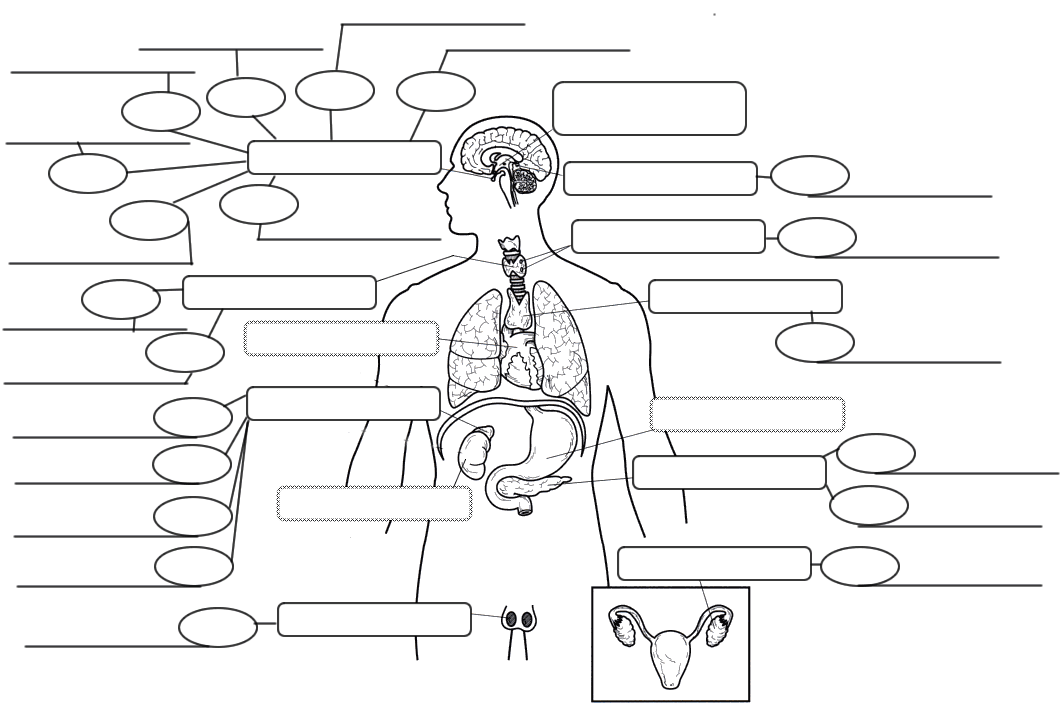Endocrine System Concept Map

The endocrine system is a complex network of glands that produce and secrete hormones, which are chemical messengers that regulate various physiological functions in the body. These glands release hormones directly into the bloodstream, allowing them to travel throughout the body and interact with specific target cells or organs.
Key components of the endocrine system include:
-
Glands: These are the primary structures that produce hormones. Major glands include the pituitary gland, thyroid gland, adrenal glands, pancreas, pineal gland, ovaries (in females), and testes (in males).
-
Hormones: These are the chemical messengers secreted by the glands. Each hormone has a specific function and target cells or organs. Some of the well-known hormones include insulin (regulates blood sugar levels), adrenaline (triggers the body's fight-or-flight response), estrogen and testosterone (regulate reproductive functions), and thyroxine (regulates metabolism).
-
Target Cells/Organs: Hormones travel through the bloodstream and attach to specific receptors on target cells or organs. Once attached, they initiate or inhibit specific actions within these cells, influencing processes like growth and development, metabolism, reproduction, mood, and more.
-
Feedback Mechanisms: The endocrine system often operates through feedback loops. For example, if hormone levels rise beyond a certain point, this can signal the system to decrease production. Conversely, low hormone levels can trigger increased production to maintain balance.

